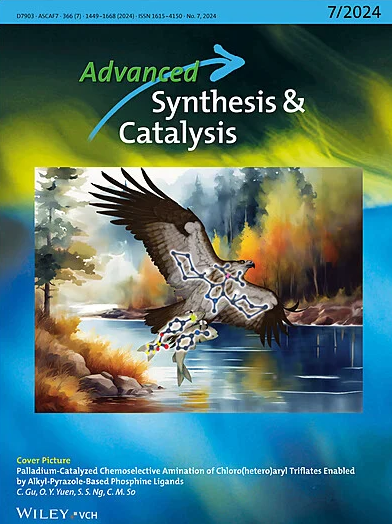Double-sided control of product type preference in the visible-light initiated reaction of 1,3-dicarbonyl compounds with alkenes
IF 4.4
2区 化学
Q2 CHEMISTRY, APPLIED
引用次数: 0
Abstract
Abstract. The demonstrated light-initiated addition of radicals formed on an active methylene group to styrene derivatives exhibits a product selectivity influenced by the presence of a protic solvent. Under protic conditions, the predominant products are branched compounds with the alkene moiety attached to the methylene group. In the absence of a proton source, an alkene is incorporated between the carbonyl group and the methylene group, forming products known from the De Mayo reaction. The utility of the presented method was confirmed by a broad substrate range of alkenes and compounds bearing active methylene groups. A comprehensive mechanistic study revealed that both types of products can be formed via the radical pathway. This suggests a previously unreported mechanistic path as an alternative to the De Mayo reaction, which gives the same type of products.求助全文
约1分钟内获得全文
求助全文
来源期刊

Advanced Synthesis & Catalysis
化学-应用化学
CiteScore
9.40
自引率
7.40%
发文量
447
审稿时长
1.8 months
期刊介绍:
Advanced Synthesis & Catalysis (ASC) is the leading primary journal in organic, organometallic, and applied chemistry.
The high impact of ASC can be attributed to the unique focus of the journal, which publishes exciting new results from academic and industrial labs on efficient, practical, and environmentally friendly organic synthesis. While homogeneous, heterogeneous, organic, and enzyme catalysis are key technologies to achieve green synthesis, significant contributions to the same goal by synthesis design, reaction techniques, flow chemistry, and continuous processing, multiphase catalysis, green solvents, catalyst immobilization, and recycling, separation science, and process development are also featured in ASC. The Aims and Scope can be found in the Notice to Authors or on the first page of the table of contents in every issue.
 求助内容:
求助内容: 应助结果提醒方式:
应助结果提醒方式:


